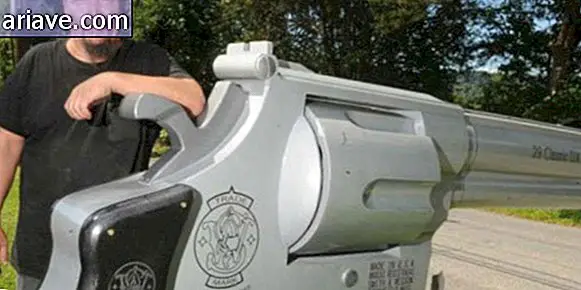Do you know how the cardboard box was invented?
As much as you don't care about them, imagine what our lives would be like without the cardboard boxes! They are widely used to carry and accommodate a multitude of items - such as chocolates, pizza, toys, our junk that is hidden in the back of the closet etc. - and can be turned into millions of different things. But what about their origin, do you know how the cardboard boxes were invented?

The answer to this question is Matt Blitz of Today I Found Out, who had to dig through sources - including texts, historical evidence and patents - to find out where the boxes came from. According to him, everything seems to prove that the cardboard appeared in China between 3 and 4 thousand years ago, when the Han dynasty Chinese started using leaves made of mulberry bark to pack and preserve food.
As Matt explains, this is not very surprising, since it was the Chinese who invented paper, also during the Han dynasty. For these materials - paper, cardboard and printed sheets - gradually began to reach the West through the Silk Road and trade relations established between China and Europe.
Western cardboard

The first mention of cardboard that is reported in Europe dates from the 17th century and was found in a print manual by Theodore Low De Vinne and Joseph Mixon called Mechanick Exercises - although this material arrived much earlier on the continent. However, the book does not refer to a type of paper used to produce boxes, but rather to write and print on.
With regard to the boxes themselves, the first mention is from 1817, when they began to be used commercially, guarding a popular German board game called Besieging Game . According to Matt, some evidence points to a British industrialist named Malcolm Thornhill as the first to produce single-sheet cartons, but the information is still very limited and uncertain.
From top hats to boxes

Do you know that all corrugated "stuffing" that makes the cardboard blades firmer? According to Matt, this material was invented in 1856 by the British Edward Healey and Edward Allen, two hat makers, who were looking for a malleable but non-fading material.
Apparently, the pair patented the invention in the same year, and in 1871 an American named Albert Jones received the patent for developing a new way to use packaging paper that made it easier to transport products while protecting cargo.
Revolution

Finally, the boxes in the shape we know today appeared in the accident in 1879 thanks to Robert Gair, the creative owner of a paper bag factory. According to Matt, until then, to make the boxes, the manufacturers took the cardboard blades and marked them all with a press before folding and making all the necessary cutouts by hand - which resulted in a process that, besides being time consuming, was very expensive.

For one day, at Gair's bag factory, one of the employees did not realize that the press was not set in the right position, and when it was thrown, it ended up cutting thousands of bags instead of just folding them. Gair, instead of getting angry at the damage, realized that he could use the same machine to fold and cut the blades, and by replacing the paper with the cardboard and making some modifications, he eventually developed the mass production of the boxes.
At first, Gair was dedicated to the manufacture of small boxes (for tea, tobacco and cosmetics), and in 1896, the industrialist signed a contract with Nabisco to manufacture 2 million units. And it was from there that the mass production of cardboard boxes exploded and consolidated in the market - and they became part of our lives once and for all.
* Posted on 2/10/2015
***
Mega is competing for the Digital Influencers Award, and you can help us be double champions! Click here to find out how. Enjoy following us on Instagram and subscribe to our YouTube channel.











